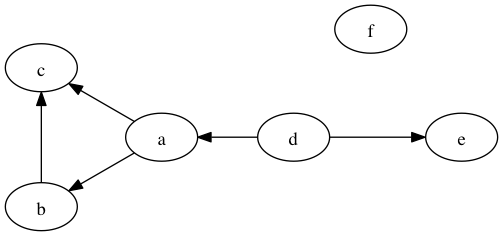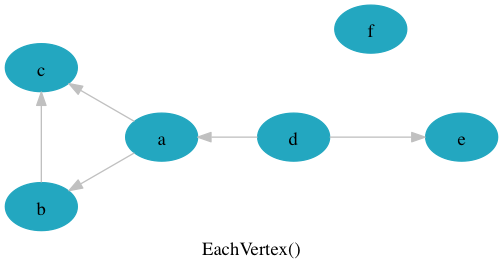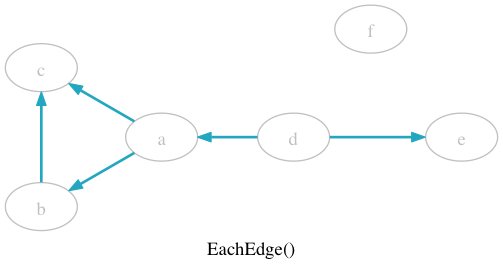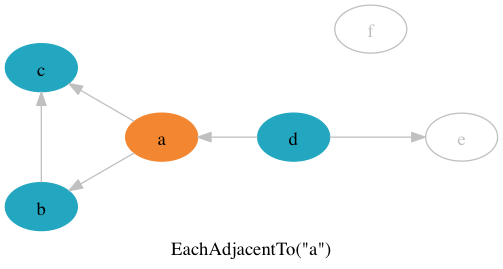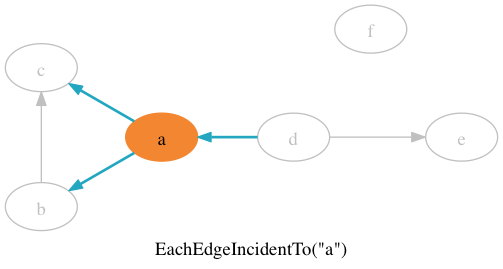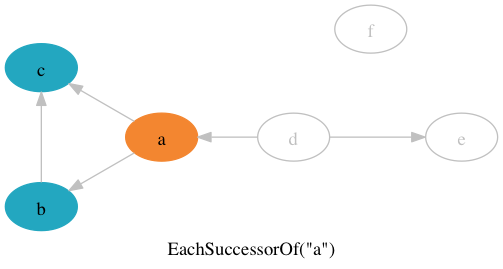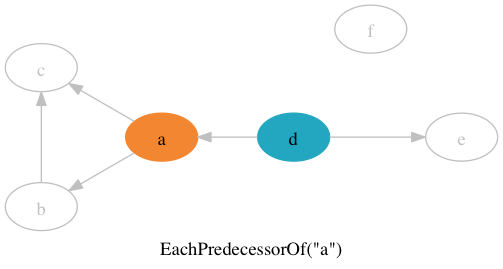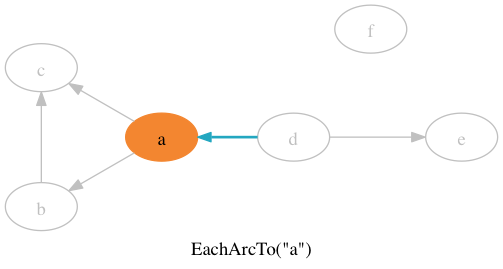gogl is a graph library in Go. Its goal is to provide simple, unifying interfaces and implementations of graph algorithms and datastructures that can scale from small graphs to very large graphs. The latter case is, as yet, untested!
gogl is based on the premise that working with graphs can be decomplected by focusing primarily on the natural constraints established in graph theory.
There's still a lot to do - gogl is still firming up significant aspects of how its API works.
Graph systems are often big, complicated affairs. Some of it comes with the territory - graphs are not a simple datastructure. But gogl tries to be not that, mostly by focusing on getting the basics right. These are gogl's operant principles:
- Simplicity: fully and correctly modeling graph theoretic concepts in idiomatic Go.
- Performance: be as fast as design constraints and known-best algorithms allow.
- Extensibility: expect others to run gogl's graph datastructures through their own algorithms, , and gogl's algorithms with their graph implementations.
- Functional: orient towards transforms, functors, and streams; achieve other styles through layering.
- Flexibility: Be unopinionated about vertices, and minimally opinionated about edges.
- Correctness: Utilize commonly accepted graph terminology where possible, and adhere to its meaning.
The first and last points are key - names in gogl are carefully chosen, with the hope that they can guide intuition when stricter rules (e.g., the type system) become ambiguous. The godoc generally takes care to detail these subtleties. But godoc is a reference, not a tutorial.
Getting started with gogl is simple: create a graph object, add your data, and off you go.
package main
import (
"fmt"
"github.com/lens-vm/gogl"
"github.com/lens-vm/gogl/graph/al"
"github.com/lens-vm/gogl/dfs"
)
func main() {
// gogl uses a builder to specify the kind of graph you want.
graph := gogl.Spec().
// The graph should be mutable. Default is immutable.
Mutable().
// The graph should have directed edges (arcs). Default is undirected.
Directed().
// The graph's edges are plain - no labels, weights, etc. This is the default.
Basic().
// No loops or parallel edges. This is the default.
SimpleGraph().
// al.G picks and returns an adjacency list-based graph, based on the spec.
Create(al.G).
// The builder always returns a Graph; type assert to get access to add/remove methods.
(gogl.MutableGraph)
// Adds two basic edges. Of course, this adds the vertices, too.
graph.AddEdges(gogl.NewEdge("foo", "bar"), gogl.NewEdge("bar", "baz"))
// gogl's core iteration concept is built on injected functions (VertexStep or
// EdgeStep). Here, a VertexStep is called once per vertex in the graph;
// the return value determines whether traversal continues.
graph.EachVertex(func(v gogl.Vertex) (terminate bool) {
fmt.Println(v) // Probably "foo\nbar\nbaz", but ordering is not guaranteed.
return // returns false, so iteration continues
})
// gogl refers to these sorts of iterating methods as enumerators. There are four
// such methods on undirected graphs, and four more on directed graphs.
// If you know you need the full result set, gogl provides functors to collect enumerations
// into slices. This makes ranging easy.
var vertices []gogl.Vertex = gogl.CollectVertices(graph)
for _, v := range vertices {
fmt.Println(v) // same as with EachVertex().
}
// The pattern is the same with edge enumeration. These two have the same output:
graph.EachEdge(func(e gogl.Edge) (terminate bool) {
fmt.Println(e) // Probably "{foo bar}\n{bar baz}". Again, ordering is not guaranteed.
return
})
for _, e := range gogl.CollectEdges(graph) {
fmt.Println(e)
}
// gogl's algorithms all rely on these enumerators to do their work. Here, we use
// a depth-first topological sort algorithm to produce a slice of vertices.
var tsl []gogl.Vertex
tsl, err := dfs.Toposort(graph, "foo")
if err == nil {
fmt.Println(tsl) // [baz bar foo]
}
}Enumerators are the primary means by which gogl graphs are expressed. As shown in the Quickstart section, they are methods on graph datastructures that receive a 'step' function, and call that function once per datum (Vertex or Edge) that is found as the method traverses the graph. There are four enumerators for gogl's undirected graphs, and four additional ones for directed graphs.
We need an example in order to demonstrate the behavior of the enumerators, so, here's the code to create a graph:
func main() {
graph := gogl.G().Mutable().Directed().Create(gogl.AdjacencyList)
graph.AddEdges([]gogl.Edge{
NewEdge("a", "b"),
NewEdge("b", "c"),
NewEdge("a", "c"),
NewEdge("a", "c"),
NewEdge("d", "a"),
NewEdge("d", "e"),
})
// 'f' is a vertex isolate.
graph.EnsureVertex("f")
}And here's a visual representation of that same graph:
Enumerators mostly come in pairs - for each type of relationship or listing, you can receive either the vertex or the edge.
The first two enumerators, EachVertex() and EachEdge(), traverse the entire graph. Calling EachVertex() would result in six calls to the injected step function, one for each of the contained vertices (marked in blue).
Calling EachEdge() will call the injected step six times, once for each of the contained edges:
Note that on directed graphs, EachArc() can also be used to this same effect; it simply passes the edge object with Arc interface type instead of Edge.
An important guarantee of enumerators not necessarily implied by the interface is that they call the step function exactly once for each relevant datum. Client code should never have to deduplicate data.
Also, remember that while implementations must enumerate all the elements exactly once, gogl has no requirement as to ordering. Graph implementations are free to sort the results, or not, as they choose.
The next pair, EachAdjacentTo() and EachEdgeIncidentTo(), are used to visit a given vertex's immediate neighbors.
EachAdjacentTo() traverses a vertex's "adjacent" vertices, which are defined as vertices that share an edge with the given vertex. Edge directionality, if any, is irrelevant. In our sample graph, calling EachAdjacentTo("a") will result in three calls to the injected step.
EachEdgeIncidentTo() enumerates all edges incident to the provided vertex. An edge is incident to a vertex if that vertex is either one of the edge's two connected endpoints; this is just an edge-oriented way of looking at that same adjacency relationship. Edge directionality, if any, is once again irrelevant.
The other four enumerators apply only to directed graphs, as they are cognizant of edge directionality. The first pair, EachSuccessorOf() and EachArcFrom(), deal with outbound edges from a given vertex.
EachSuccessorOf() enumerates all of a given vertex's "successors" - vertices which are the target, or head, of a directed edge where the given vertex is the tail, or source.
EachArcFrom() enumerates all the outbound arcs ("arc" simply indicates an edge is directed) from the given vertex:
The final pair, EachPredecessorOf() and EachArcTo(), should be easy enough to guess at. EachPredecessorOf() enumerates all of a vertex's predecessors.
And EachArcTo() enumerates all the arcs inbound to the given vertex:
EachPredecessorOf() and EachSuccessorOf() are the logical complements; calling both is equivalent to calling EachAdjacentTo(). The same is true of the arc methods and EachEdgeIncidentTo().
These eight enumerators are gogl's most important building blocks. They fully describe the basic structure of a graph-based model, and can be combined to formulate essentially any basic graph visitation pattern.
There are some additional enumerators for graph subtypes - e.g., EachLabeledEdgeIncidentTo() (not yet implemented) is an "optional optimization" enumerator that labeled graphs can implement if, say, they maintain indices that allow them to more efficiently locate and return the subset of incident edges with a particular label than would a naive traversal of the entire incident edge set with direct string comparisons.
Where possible, such optional optimizations are automatically selected and utilized by gogl's various functors.
MIT


